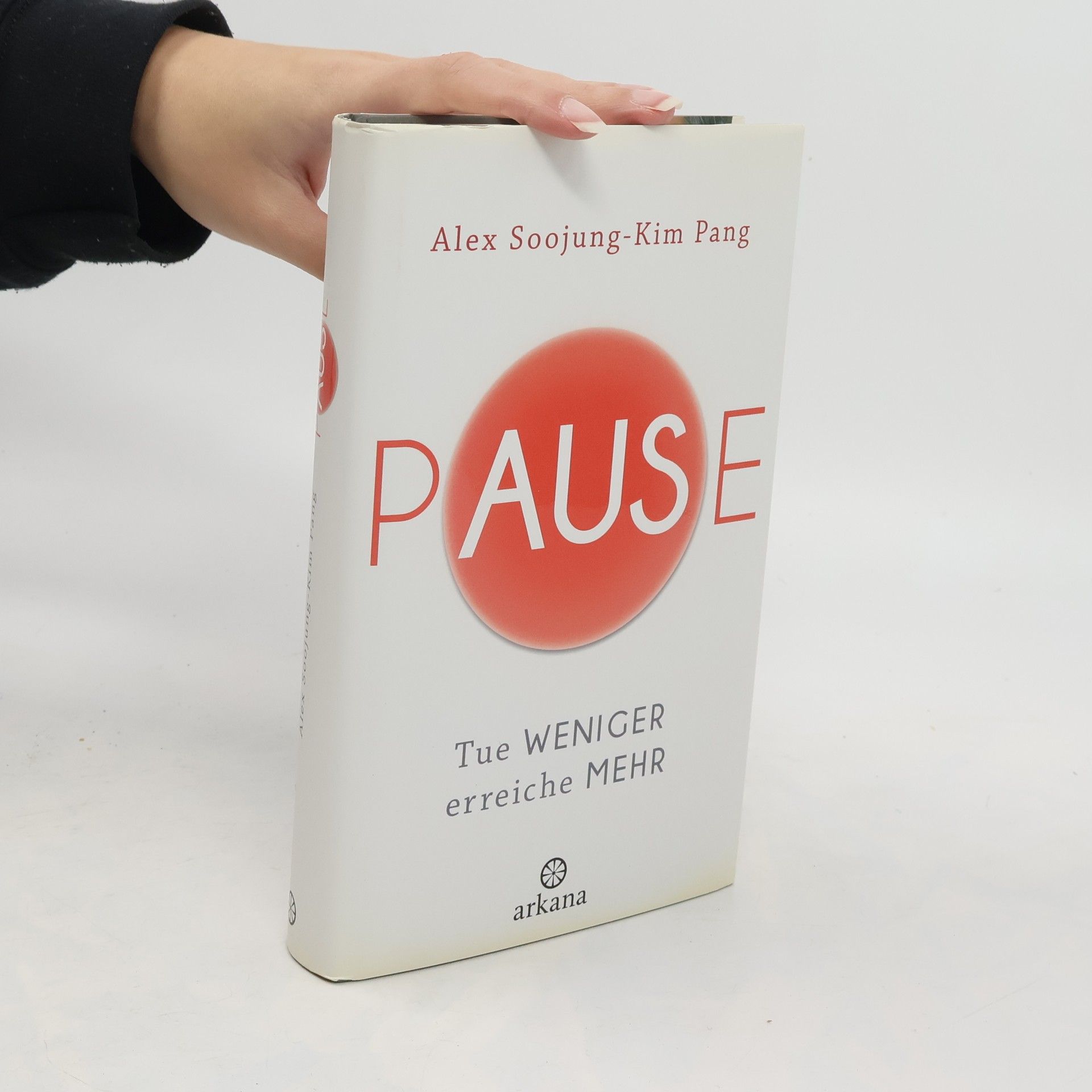Die faszinierende Wissenschaft der Pause. Albert Einstein kannte sie, Charles Darwin und auch Thomas Mann: die Kunst, Pausen richtig zu nutzen! Denn alle drei arbeiteten täglich nicht länger als vier bis sechs Stunden und leisteten doch Herausragendes auf ihren jeweiligen Gebieten. Anhand dieser und vieler weiterer historischer Beispiele sowie aktueller Ergebnisse aus verschiedenen wissenschaftlichen Disziplinen weist der bekannte als Gastwissenschaftler an der Stanford University tätige Autor Alex Pang eindrucksvoll nach: Pausen sind ein wichtiger Bestandteil des Arbeitsprozesses, die richtig genutzt kreativer und produktiver machen. Sie sind keineswegs bloße „Ruhezeiten“, in denen alle Zeichen auf Pause stehen, sondern unbedingt notwendig für das Gehirn, um Informationen zu verarbeiten, einzuordnen und neue Zusammenhänge herzustellen. Wie Pausen zu wahren Krafttankstellen werden, die uns zutiefst erfrischen und unsere Kreativität in Hochform bringen, zeigt uns Alex Pang am Beispiel vieler unterschiedlicher Formen: Nickerchen, Morgen-Routinen, Zeiten des spielerischen Zeitvertreibs, körperliche Betätigung, Sabbaticals und viele andere mehr. Mit bahnbrechenden Ideen und vielen praktischen Tipps lädt die faszinierende Wissenschaft der Pause dazu ein, durch weniger mehr zu erreichen.
Alex S.-K. Pang Bücher




Shorter
- 320 Seiten
- 12 Lesestunden
You and your company can work less, be more productive, and make time for what's really important. The idea of success embraced by the global economy means being always-on, never missing an opportunity, and outworking your peers. But working ever-longer hours is't sustainable for companies or individuals. Fatigue-induced mistakes, whether in the operating room or factory line, cost companies billions, and overwork alienates and burns out valuable employees. But what if there is another way? Shorter tells the story of entrepreneurs and leaders all over the world who have discovered how to shrink the workweek without cutting salaries or sacrificing productivity or revenues. They show that by reducing distractions, eliminating inefficiencies, and creating time for high-quality focus and collaboration, 4-day workweeks can boost recruitment and retention, make leaders more thoughtful and companies more sustainable, and improve work-life balance. Using design thinking, a business and product development process pioneered in Silicon Valley, futurist and consultant Alex Pang creates a step-by-step guide for readers to redesign their workdays.
The 4-day week is no longer just an idea. Following successful trials in countries as far apart as New Zealand and the United Kingdom, research now shows that a shorter workweek benefits both companies and employees. Participating firms see a dramatic decline in sick days, their people are happier, more engaged, eat and sleep better and have more time for their families and exercise. But beyond the employee benefits, companies working shorter weeks also report improved communication and collaboration, improvements in recruitment and retention, and a rise in productivity. So what are you waiting for? Work Less, Do More offers a practical framework for making a 4-day week a reality in your business, whatever its sector and size. Expert Alex Pang helps you identify the best pattern for your company, assemble a team, define what success looks like, think through worst-case scenarios, redesign the workday, prepare for any difficulties, and finally put your plan into action. So, whether you are a founder who wants to make the 4-day week a reality, an employee who needs to make the case for a shorter work pattern to the board, or a manager who wonders whether this could give your team an extra edge, this is the only book you need to make the 4-day week work for you.
A Concise Introduction to Scientific Visualization
Past, Present, and Future
Scientific visualization has always been an integral part of discovery, starting first with simplified drawings of the pre-Enlightenment and progressing to present day. Mathematical formalism often supersedes visual methods, but their use is at the core of the mental process. As historical examples, a spatial description of flow led to electromagnetic theory, and without visualization of crystals, structural chemistry would not exist. With the advent of computer graphics technology, visualization has become a driving force in modern computing. A Concise Introduction to Scientific Visualization – Past, Present, and Future serves as a primer to visualization without assuming prior knowledge. It discusses both the history of visualization in scientific endeavour, and how scientific visualization is currently shaping the progress of science as a multi-disciplinary domain.